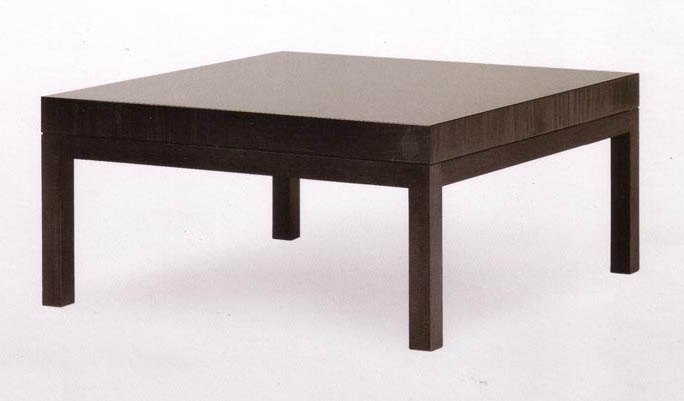Question
I am making a coffee table something like the one in the picture. The top and sides will be Macassar ebony veneer, done in a vacuum press. Substrate will either be MDF or Baltic birch ply. I want to make the top as a torsion box - 4' x 4' x 2.5".
Do I need to apply backer to the inside surface of each skin? Or do I simply need to apply backer to the underside of the completed torsion box? Some folks are saying that if I do not put backer on each skin, it will warp from the face veneer. This makes intuitive sense to me, but I hear of lots of folks making torsion boxes, putting face veneer on top, backer on the bottom, and it all works out.
I'd like to apply the face veneer after the sides, so it overlaps. Hence, I cannot veneer both sides of the skins first, then build the torsion box. The veneer is simple solid wood (1/28" I think, maybe 1/32") and I'll be using urea formaldehyde glue. What to do?

Forum Responses
(Veneer Forum)
From contributor J:
Make your torsion box with unfaced MDF, then treat the complete torsion box as if it were a slab of anything else for edging and veneering purposes.
The only problem with balancing each skin is this: I'd like to put the face veneer on last, overlapping the veneer on the sides. If I veneer the skins on their own, I have to put the side veneer on afterward, and you will see that thin edge of the side veneer. Not a big deal I guess, but less than ideal.
So - there is a real controversy here. Some are saying that you can treat the torsion box as a single panel, and others are saying you need to balance each skin. I guess it depends on the skin thickness and grid material.
By the way, I was planning on a grid spacing of 2" or so. Maybe 3. I can't imagine that a 1/2" skin would sag in between 2" spaced ribs. But my bigger concern is whether the skins will separate at the edges from the pull of the outside veneers, if there is no balancing veneer on the inside.
The periphery of the torsion box will be 3/4" MDF. I plan to glue up the torsion box in the vacuum press, with the vac turned down to 15" of hg. I'll veneer the sides of the box using clamps and cauls. Then, I'll veneer the backer and the face veneer in the vac press (with the vac set to 21" of hg).